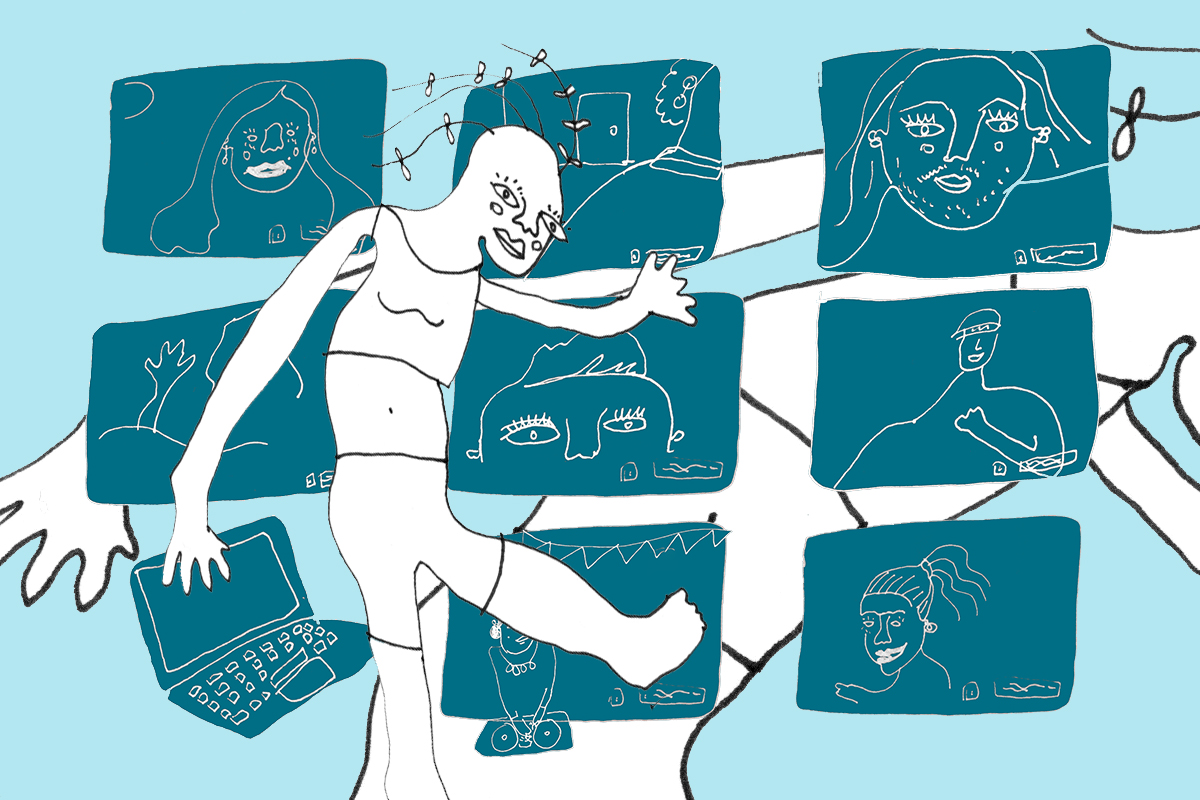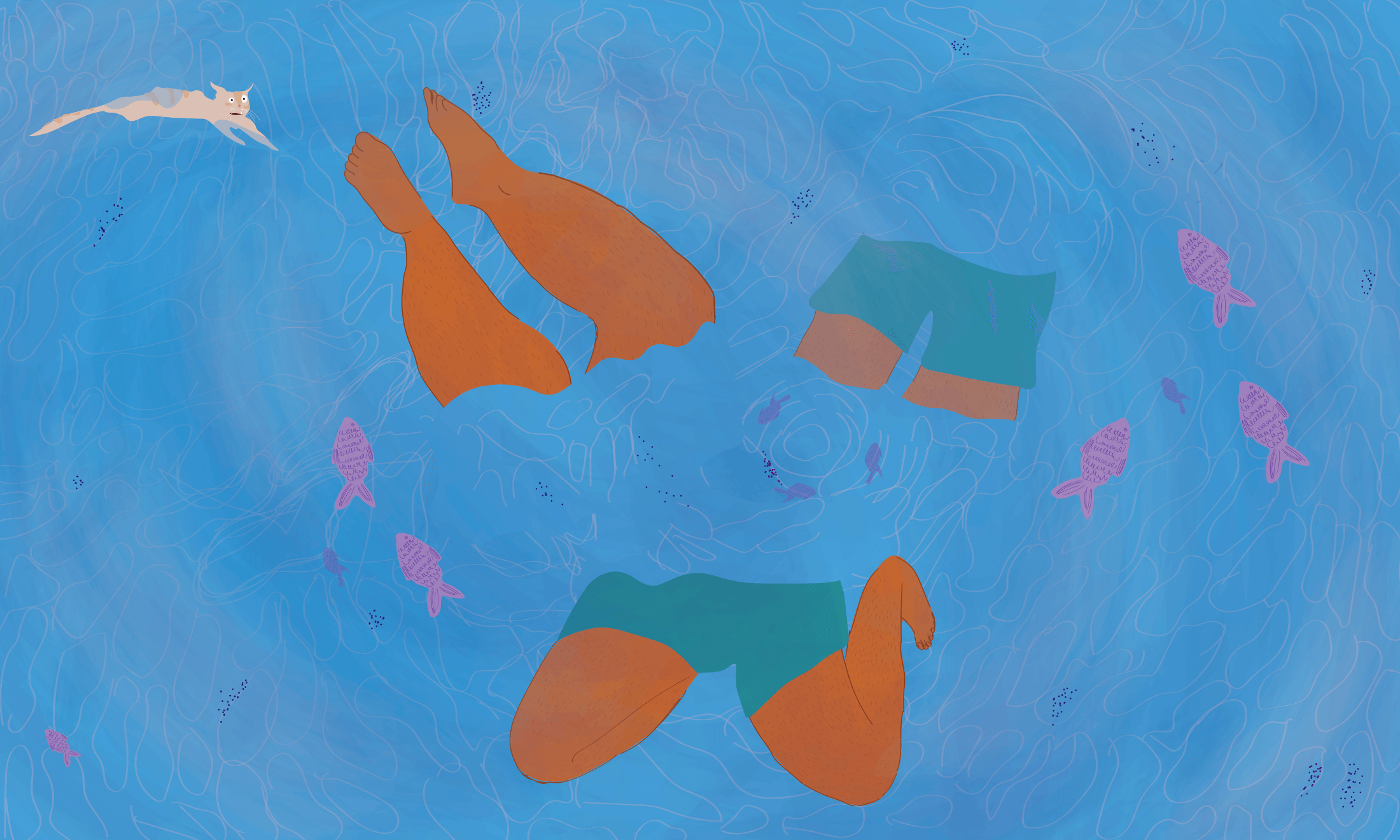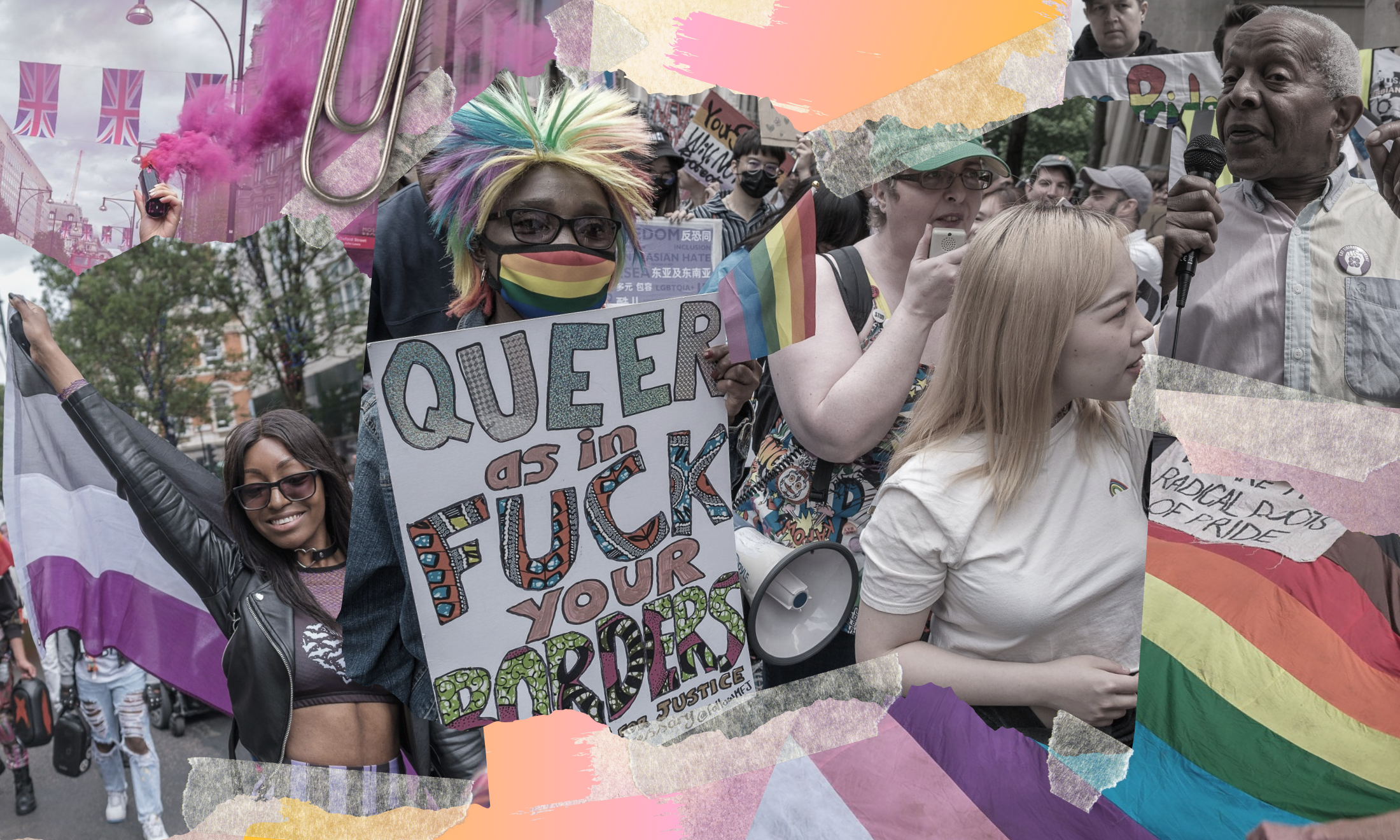
Illustration by Alice Z Jones
Lockdown showed the power of internet friends, something queer people always knew
Online support networks have been a lifeline in lockdown, but we've delved deeper into how QTPOC have fine-tuned this art over time.
Nic Crosara
24 Jun 2020
Depending on who you ask, I’m either a millennial or a zoomer. Regardless, I was raised by the internet and grew up in the age of social media, chatrooms, online relationships and ChatRoulette. Lockdown gifted us with a resurgence of online safe spaces that are so important for marginalised groups to have access to, and I’ve happily indulged.
Internet friendships have moved into the mainstream as physical connection wains. Many of us haven’t seen our friends or support networks for months – other than through a screen. Just by looking at the introduction posts on the private groups I have been a part of for a short time, it is easy to see groups and platforms being flooded with newbies.
Virtual safe spaces may seem like a very modern experience but the virtual bulletin board Net.motss (members of the same sex) began in 1983. Since then technology has boomed at a rapid rate. There are subreddits for various LGBTQIA+ groups and experiences, r/LGBTpolitics, r/lgbtsex and r/lgbt to name a few. In 2017, private Facebook groups had more safeguarding tools put in place. Admins could now screen people wanting to join with three questions. This makes it harder for trolls, homophobes and transphobes to enter. These platforms were important for the mental wellbeing of people from marginalised groups long before the pandemic started. I wanted to find out more about how these spaces came to be a lifeline.
Creating your own space to breathe
Shortly into self-isolation, I noticed that members of the LGBTQIA+ community, such as theatre-maker Travis Alabanza were referencing Queer House Party. Now, every Friday night, I get lost in the inclusive, activist night that is QHP. Week after week, I have been exposed to a versatile stream of queer people smiling, dancing and existing. Wanting to find more ways to connect with people outside of the party atmosphere, I joined various Trans Facebook groups and tailored my social media apps to reflect the type of environment I wanted to immerse myself in.
Actor and model Cole Daniel, 26, describes having to sift through a lot of pages to find his people. “The problem was that these spaces were by vast majority white spaces, so the mutual understanding that comes with being a person of colour, along with belonging to the LGBTQIA+ community was still severely lacking,” he explains. Being queer, brown, disabled and trans, finding people who understand you is hard, explains Hash, 21. “It’s a lot of qualifiers for your experience as a person, I was looking for people who experienced the world similarly to me so I could navigate my life with more confidence,” they say.
“I can be upfront about who I am and inevitably the people who stick around will be ok with that”
Hash has found it easier to create their own spaces rather than join existing ones. “I can be upfront about who I am and inevitably the people who stick around will be ok with that. Whereas going into other people’s spaces there’s always a bit of a question for me, even in queer spaces, how much of me will they expect? Even queer spaces can be hostile or racist or caught up in community discourse, it can be alienating”.
Cole is evangelical about the magic of having a place to unapologetically be yourself even if only from behind a keyboard. “It gives space for people to freely express themselves, which in a lot of cases – be that due to cultural expectations or living arrangements (to name a couple), they can’t safely do.”
E-friends and adolescence
Growing up as a minority already marks you as different, and there was a very real fear of being mocked for not having many “real friends” and indulging in the online world instead. I rarely shared my virtual life with my in-person friends, so as to avoid these conversations. I wondered whether they found the normalisation of internet bonding via the coronavirus crisis validating or frustrating. Elz Deane, 22, a psychology-graduate and care worker, who had been meeting people online for the longest time out of all the people I met, found it to be both.
“It’s good to see that now everyone can look back and think, well Elz wasn’t actually that weird or it’s not that weird at all having internet friendships. However, it’s frustrating because it doesn’t erase the fact that I always had negative comments when I was younger, and it hurt me then. I’m glad it’s been normalised, but I wish it had been normal years back”.
“I became clingy and felt like these virtual spaces were the only thing that I had”
From Tumblr to Instagram and Twitter, Elz has maintained some online friendships for around eight years. As a teen, Elz was obsessed with fantasy TV programs and this was a motivator for them to find like-minded individuals. It became an obsession. Many lonely black and brown kids will know all too well how escaping into the virtual world can become addictive. Elz knows this too well. “I was always online, and that affected things like school and at the time, my relationship with my family. I became clingy and felt like these virtual spaces were the only thing that I had. Which was sad that I felt that way at the time.” Nevertheless, having someone to confide in helped shape them.
Like me, Ivan, 23, came across virtual safe spaces accidentally. He grew up in a place where racism and transphobia were thriving and needed some escapism. “When I was 17, I began writing online and that attracted a more diverse audience than I was used to,” he explains. “I slowly became aware of how desperate I really was to expose myself to stories and people with similar experiences to my own, as well as learning about experiences I had no knowledge of at all.” He started being approached and making friends with almost exclusively LGBTQIA+ youth and would receive messages telling him how much his writing had helped them feel less alone. “It worked both ways. Those reading and seeing themselves in it all, too, improved my mental health for years during the process of my own self-discovery.” Ivan’s story shows how art has the potential to bring communities together. If your work is authentic, it will also inevitably speak to people with similar lived experiences or shared interests.
Online friends, lockdown and turbulent life changes
It’s not just anxious teens that need the camaraderie, over the last year, 22-year-old Fey Kapur’s internet friends have helped them maintain a sense of companionship in new and unfamiliar settings. “Having digital spaces is definitely a nice escape and is a good way to form communities when I’m moving from city to city,” they say. Speaking with Fey it’s clear that queer communities have been innovative in finding new tools to make new friends using “dating and hook-up apps”. In fact, they met one of their best friends on their year abroad in Australia through Grindr. While using dating apps platonically is still unconventional and stigmatised, but due to their success, we have seen more platonically-focused apps made such as Meet Up, We3 and Patook.
Actually, it seemed that those who were used to web-based friendships were flying in lockdown. Hash, 21, is the artist behind Sofftpunk explains: “We’re already used to showing our love online and not physically. I think with my in-person friends it’s been a bit harder to change our relationship to an online one.”
“We’re already used to showing our love online and not physically”
Motivated by my own detachment, I started joining Facebook groups for trans and non-binary PoC. I noticed the difference instantly and appreciated how they posted about trans experiences but also held constructive conversations about everything which is affected by white supremacy and capitalism – such as Black Lives Matter, Choose Love and The Climate Emergency. These groups moved beyond the traditional introduction posts and memes. People would share live streams of BLM protests, petitions and there would be much more conversations about intersectional trans experiences. I felt a greater sense of a global trans experience.
Talking with others has inspired me to think outside of the box when it comes to taking agency over my virtual and physical connections. I have begun searching for resources, such as this one, to find QTIPOC organisations in the UK. I have been inspired to use dating apps platonically, to create and join more groups and to tailor my news feed. Queer House Party has inspired me to think of how I can use the internet to get more involved with activism. Covid-19 has already brought about a load of challenges. Many, myself included, will say that things will never be the same. I hope that one of the small good things to come out of this tragedy is that we will move beyond the idea that social media is objectively an unhealthy addiction (no matter how it is used) and move towards thinking of new ways to use technology to bring about mental wellbeing and community.









